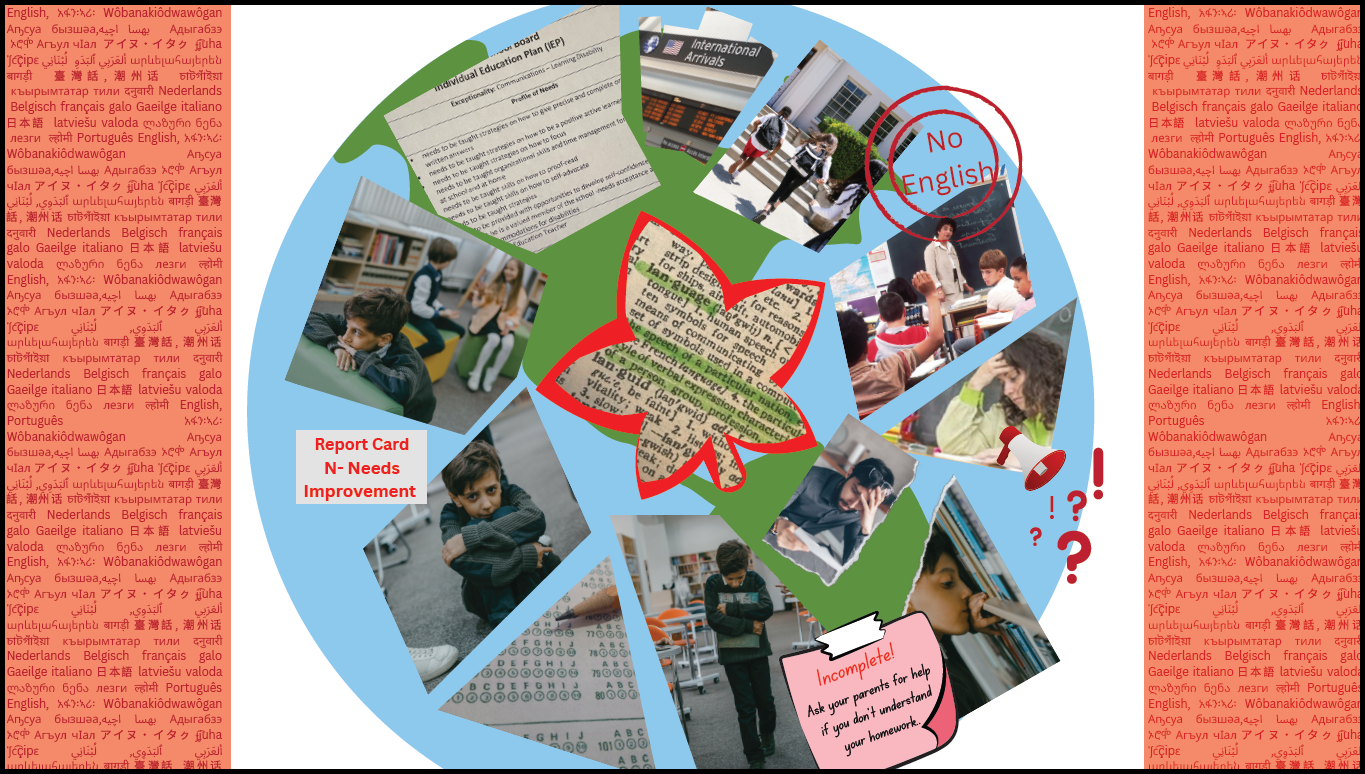4 English Language Learning

By Helen Camacho
The collage highlights the inequities faced by non-English speaking immigrant children when they enter Canadian schools. Despite Canada’s strong track record of implementing policies and programs supporting immigrant students, in Ontario, systemic barriers and discrimination still exist (Campbell, 2020). As a future teacher, many of my students will face these injustices.
The collage is displayed on a Canadian flag with a globe to represent the 23% of the population who are immigrants (Statistics Canada, 2022). The maple leaf displays the multiple definitions of the word language; the highlighted parts remind us that language is more than spoken words but part of a nation and the style of a people. From the moment they enter school, immigrant students are at a disadvantage to their peers as they must learn the language, culture, and values in addition to the curriculum. Despite intentions, educators often use an ethnocentric, not multicultural approach, and many “lack self-awareness and [their] response to difference can promote negative attitudes that can lead to wider achievement gaps and discrimination among immigrant students” (Lara & Volante, 2019, p. 4).
These students are further disadvantaged as their parents’ limited English skills reduce their ability to support their children academically (Lara & Volante, 2019). School Board practices such as standardized testing and streaming, often misidentify these students, failing to recognize that they actually need more time to learn the language and catch up to their peers (Lara & Volante, 2019). As a result, they are overrepresented in special education classes (MAEC, 2016). The pressure of learning a new language and struggling to communicate with others often leads to feelings of isolation and lack of belonging (Cardoza, 2018; Lara & Volante, 2019). Each of these factors, combined or independently, puts non-English speaking immigrant students at risk of not reaching their full academic potential.
References
Campbell, C. (2021). Educational equity in Canada: the case of Ontario’s strategies and actions to advance excellence and equity for students. School Leadership & Management, 41(4-5), pp. 409–428. https://doi.org/10.1080/13632434.2019.1709165
Cardoza, K., (2018, February, 28). In Canada’s public schools, immigrant students are thriving. Education Week. https://www.edweek.org/leadership/in-canadas-public-schools-immigrant-students-are-thriving/2018/02#:~:text=Overall%2C%2030%20percent%20of%20Canada%27s,immigrants%20or%20children%20of%20immigrants.
Lara, C.C. & Volante L. (2019). The education and integration of immigrant children in Ontario: A content analysis of policy documents guiding schools’ response to the needs of immigrant students. Canadian Journal of Educational Administration and Policy, 191, 2-21.
MAEC. (2016). English learners & disproportionality in special education. https://maec.org/wp-content/uploads/2016/04/English-Learners-and-Disproportionality-in-Special-Ed.pdf
Statistics Canada. (2022, October 26). Immigrants make up the largest share of the population in over 150 years and continue to shape who we are as Canadians. https://www150.statcan.gc.ca/n1/daily-quotidien/221026/dq221026a-eng.htm

